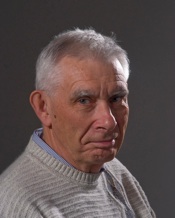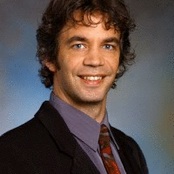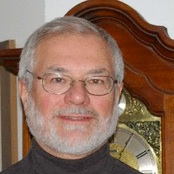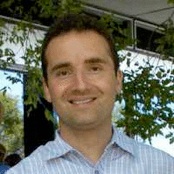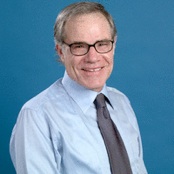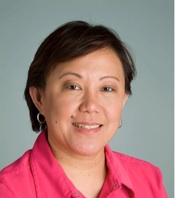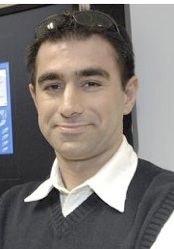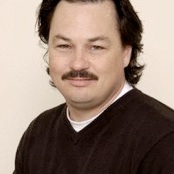Table 13: Allan J. Baker, Ph.D., Senior Curator of Ornithology at the Royal Ontario Museum and Professor of Ecology and Evolutionary Biology at the U of T
Barcoding Life: DNA and the All Birds Barcoding Initiative
Canada leads an international consortium of scientists in the DNA Barcoding of life project. A global effort to identify and preserve biodiversity, the project seeks to document all life forms on our planet with an online library of short, standardized DNA barcodes. The project also has immense economic benefits: it will allow for instant identification of pathogens affecting human health, air strikes causing damage to planes, consumer fraud in foods, invasive species, and environmental monitoring.
A molecular evolutionist, Allan Baker received the William Brewster medal in 2007 from the American Ornithologists Union for outstanding advances in the study of molecular evolution in birds. He founded the Global Flyway Network with Netherlands researcher Theunis Piersma to investigate the decline of migratory shorebirds worldwide. He is co-chair of the All Birds Barcoding Initiative [ABBI] steering committee, which will identify the planet’s 10,000+ bird species of birds using unique DNA sequences.
Table 14: Terry Kimmel, Vice-President of the Canadian Hydrogen and Fuel Cell Association
Hydrogen Fuel Cells: When, Why and How
You’ve heard that hydrogen can play a role in a new energy paradigm and can reduce the effects of climate change – but where’s the evidence? What’s happening in Canada and around the world in hydrogen and fuel cell research, development and commercialization? Canada was a global leader: is it still?
Terry Kimmel is Vice-President of the Canadian Hydrogen and Fuel Cell Association, which merged the Canadian Hydrogen Association and Hydrogen and Fuel Cells Canada. His involvement in the hydrogen sector represents a convergence of his prior experience in business development with the National Research Council Canada and Atomic Energy of Canada, and as President of an oil industry R&D company. Terry is Chairman of the Partnership for Advancing the Transition to Hydrogen (PATH), a Board member of the International Association for Hydrogen Energy (IAHE) and a member of the Oversight Committee of the Hydrogen Village in the GTA.
Table 15: Suzanne Fortier, Ph.D., President of the Natural Sciences and Engineering Research Council of Canada (NSERC)
Investing in the Future: Is Canada Training Enough Scientists and Engineers?
Nearly all nations are increasing their investments in Science and Technology. In some countries, this is accompanied by a massive increase in the number of students trained in these disciplines. In many OECD countries, however, the trend is going the other way, raising concerns about their ability to compete in a global S&T economy. Is there a reason for Canada to worry about either the size or skills of its future S&T workforce?
Dr. Suzanne Fortier has served as President of the Natural Sciences and Engineering Research Council of Canada (NSERC) since January 2006. Before her appointment to this position, Dr. Fortier was a member of Queen’s University as Professor in both the Department of Chemistry and the School of Computing. She also served as Vice-Principal (Research) from 1995 to 2000 and Vice-Principal (Academic) from 2000 to 2005. Dr. Fortier is a crystallographer by training, specializing in the development of mathematical and artificial intelligence methodologies for protein structure determination.
Table 16: John (Jack) McConnell, Ph.D., Professor of Atmospheric Science, York University
Adapting to Climate Change. Now.
Over the next 20-30 years, society will need to adapt to climate change. But what do we adapt to? Our only recourse is models. How well are models able to predict future climate conditions, especially in an uncertain economic future? How will the disappearance of petroleum reserves impact the future? It is likely that developed societies with access to technology will probably cope. But what of developing societies with limited access to technology and financial resources? Rising sea levels may result in massive migrations and push already precarious agriculture to the brink. How can we mitigate?
Jack McConnell has studied planetary atmospheres for the last 40 years. His group is focused on how the ozone layer will recover over the next 60 years and the global effects of air pollution. In addition to making weather forecasts for Mars, he is researching
the impacts of climate change on air quality.
Table 17: M. Cynthia Goh, Ph.D., Professor of Chemistry at the U of T and Associate Director of the Institute for Optical Studies
Nanotechnology: The Hope and the Hype
Nanotechnology – the engineering of functional systems on the scale of molecules [nanometers] – is supposed to have significant impact on almost all industries and areas of society, with the promise of better built, longer lasting, cleaner and smarter products. What has nanotechnology done for us so far? Are we close to realizing its promise?
M. Cynthia Goh is a Professor of Chemistry at the U of T and Associate Director of the Institute for Optical Studies. She is interested in a fundamental understanding of phenomena at the meso and nanoscale, and in the exploitation of the results of scientific research to provide benefit to society. She is the technology founder of Axela Inc, a life science and medical diagnostics company, and Vive Nano [formerly Northern Nanotechnologies], the fastest growing nanotech company in Canada.
Table 18: Sean Whittaker, P.Eng., Vice President, Policy - Canadian Wind Energy Association (CanWEA)
Wind: An Infinite Source of Clean Power?
Wind energy holds great promise for Canada. Nowhere is this more evident than in Ontario’s Green Energy Act – a new initiative that ensures wind and other renewable energies will play a key role in the province’s future energy supply. But with change comes questions: How will wind integrate into the grid? What will the costs be? How will communities view wind turbines in their back yards? Can wind energy really deliver on its promise?
Sean Whittaker is a professional engineer and Vice President, Policy for the Canadian Wind Energy Association [CanWEA], a not-for-profit industry association that supports the appropriate development of wind energy. Its goal is for wind energy to supply 20% of Canada’s electricity needs by 2025. Sean is responsible for overall policy development provincially and federally, ensuring that CanWEA’s work is focused on issues and regions with the greatest influence over wind energy’s growth across Canada. Before joining CanWEA, he worked in Madagascar designing, building and installing windmills for community irrigation projects.
Table 19: R. Paul Thompson, Ph.D., Professor and Director, Institute for the History and Philosophy of Science and Technology, and Professor, Department of Ecology and Evolutionary Biology, U of T
Developing Revolutionary Scientific Ideas: Learning from Charles Darwin
November 2009 marks the 150th anniversary of the publication of The Origin of Species, a work that provided a powerful theoretical foundation for biology. Prior to 1859, Darwin was recognized as a brilliant empirical scientist; Origin revealed that he was also a
brilliant theoretical scientist. Breaking new ground depends on developing theories. Darwin was a master from whom much can be learned today about developing bold new ideas that, like his theory of evolution, transform science.
Paul Thompson is a Professor in the University of Toronto’s Institute for the History and Philosophy of Science and Technology [also its Director], and Department of Ecology and Evolutionary Biology. He has been Principal at U of T’s Scarborough campus, served on advisory councils [Bayer and Monsanto], and serves on two CIHR committees. His publications include books and articles on population genetics and evolutionary theory, and he is currently writing a book for Cambridge UP on Agribiotechnology.
Table 20: Fiona McNeill, Ph.D., Chair, Department of Medical Physics and Applied Radiation Sciences and Associate Vice-President of Research, McMaster University
Lead Contamination and X-Ray Fluorescence
In 2008, lead contaminated toys and jewelry sparked numerous product recalls over concerns of the potential for exposure to lead. Dr Fiona McNeill is the McMaster University project leader in a new Health Canada study to measure how much of this toxic metal Canadians are currently exposed to and how much they have absorbed over time. The project uses X-ray fluorescence [XRF] techniques, pioneered at McMaster, to detect and measure the presence of elements such as lead in vivo. Painless and noninvasive, bone lead measurements mark long-term exposure, and will allow Health Canada to begin assessing chronic lead exposure. The study is scheduled to begin in Toronto this summer.
Fiona McNeill studied physics at the University of Edinburgh and was granted a PhD in physics from the University of Birmingham, England. She has worked at the Lund University Radiophysics Institute in Malmö, Sweden, on a Royal Society European Science Exchange Fellowship and spent four years in the Toxicology Program of the University of Maryland. She joined McMaster in 1995, and in 2009 was appointed Associate Vice-President of Research.
Table 21: Rene Van Acker, Ph.D., P.Ag., Professor and Chair, Department of Plant Agriculture, University of Guelph
Living on Sunlight: A Sustainable Agriculture
Agriculture captures sunlight to serve human needs. In an era when fossil fuels are becoming increasingly scarce, agriculture is being asked to serve a broader range of societal needs. It’s a challenge that can’t be met by simple technology-based agricultural models; new models are required. They will need to include production and management knowledge, biological functionality through system diversity and integration, community amongst farmers and between farmers and consumers.
Dr. Van Acker’s research interests include weed-crop ecology, robust cropping systems and the coexistence of GM and non-GM crops. His research has led to collaborations and presentations in Denmark, Australia, Switzerland, the Ukraine, Australia, the US and Canada. Rene grew up on a farm in southwest Ontario. He holds BSc and MSc degrees from the University of Guelph and a PhD from the University of Reading [UK].
Table 22: Natalie Reynolds, Winemaker
From Vine to Wine: The Science Behind Every Decision
What is it about the vineyard and the winemaking process that makes an extraordinary bottle of wine? Why are some wines $15 a bottle and others $150? What is required in the vineyard and after the harvest to ensure the best expression of variety and terroir?
Since 2005, Natalie Reynolds has been the principal winemaker at Thirty Bench focusing on ultra-premium Rieslings and Bordeaux reds. A graduate of Brock University’s Cool Climate Oenology and Viticulture Institute, she has worked with J-L Groux at Hillebrand,
making several different styles of wine, from traditional method sparkling to icewine. In 2006, she brought in the harvest in New Zealand at Craggy Range in Hawke’s Bay and Villa Maria, Marlborough. Her philosophy is to intervene as little as possible and as naturally as possible in the vineyard.
Table 23: Bruce Kidd, Ph.D., Professor and Dean of the Faculty of Physical Education and Health, U of T
Science, Sport and Society
Sport impacts virtually every aspect of contemporary life: from the design of cities to top-rated television to our physical health. Childhood obesity, diabetes, even school drop out rates and the pervasiveness of guns and gangs – the absence of sport and physical activity contributes to the sobering increase in noncommunicable physical diseases worldwide and troubling social problems. Researchers are only beginning to understand the social impacts of sport on society today.
Bruce Kidd is Professor and Dean of the Faculty of Physical Education and Health at the U of T, where sport and physical activity are the subjects of research, teaching, programming and advocacy. In his own work, he writes and teaches on the political economy of Canadian and international sport. Chair of the Commonwealth Advisory Body on Sport, he has participated in the Olympic Movement as an athlete, coach, educator and journalist, and is a contributor to arts and and culture programs, as well as being a social scientist.
Table 24: Hossein Rahnama, Ph.D., Research Director, Ryerson Ubiquitous Computing Lab
Ambient Intelligence: The Right Information to the Right Person at the Right Time
In computer science, Ambient Intelligence and Context-Awareness refers to electronic environments that are sensitive to the presence of humans. Classrooms, living rooms, airports and railway stations can all become intelligent environments, capable of providing the right information to the right users at the right time.
Hossein Rahnama is a researcher in a European Union funded research project, MUSIC, where he researches and develops innovative software solutions for organizations like the Paris Metro Authority [RATP]. Working with Appear Networks, a global leader in mobility solutions based in Stockholm, Hossein leads a group of researchers in the Pervasive Computing Lab at Ryerson University who are analyzing and developing the next generation of ubiquitous and intelligent mobile software platforms. Hossein believes the future of daily computing will be mobile and more social. His research focuses on settings where mobile devices are used to enhance interpersonal communications while conserving computing power and energy.
Table 24: Jeff Wood, Ph.D., P.Eng., Associate Professor, Department of Mechanical and Materials Engineering, University of Western Ontario
Our Material World
The performance of anything that you might consider making – from the lowly paper clip to the automobile of the future – will depend, at least in part, upon the properties of the materials from which it is made. Understanding the relationships between the processing, structure and properties of materials affords us the ability to manipulate their characteristics to our benefit – lighter, safer automobiles; inexpensive electronics; high performance hockey sticks.
Jeff Wood studied mechanical engineering at the University of Waterloo and earned a Ph.D. in Materials Science from McMaster University. He is the Project Leader for the Magnesium Casting Processes program under the AUTO21 Network of Centres of
Excellence. His research interests are primarily found in the intersection of engineering design and materials science and include such topics as the die-casting of magnesium automotive components, energy absorption of polymer composites, and the optimization of high-performance sporting equipment.






